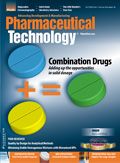Regulation and Compliance Q&A on 483s
Q&A with David Elder and Richard Wright of Strategic Compliance Consulting, PAREXEL International. Both Elder and Wright formerly served with FDA.
Q. How should a company approach handling an FDA-483 observation with which they do not agree?
A. The best approach to deal with an observation with which a company does not agree is to prevent an FDA-483 observation in the first place.
During the course of an FDA inspection, there will be many opportunities to ascertain the areas of interest and potential areas of concern of the investigator. The clearest opportunity to understand the true concerns of the investigator will be during the periodic wrap-up sessions, which should occur on a daily basis per Investigations Operations Manual (IOM) Section 5.2.3: "... investigators and analysts should make every reasonable effort to discuss all observations with the management of the establishment as they are observed, or on a daily basis, to minimize surprises, errors, and misunderstandings when the FDA 483 is issued..." (1).
FDA investigators are human beings just like the rest of us and mistakes or misunderstanding can happen. The agency encourages the industry to use these communication opportunities to ask questions or request clarification, and if during the course of these communication opportunities it becomes apparent that there is an area of misinterpretation or misunderstanding, additional information or documentation should be presented quickly and clearly. It is highly encouraged that a professional posture be maintained, even when a company does not agree with the investigator. It is better for both the company and for FDA if any and all observations on the FDA-483 are understood, are factually accurate, and are grounded in law or regulation.
The ability to take prompt corrective action is another advantage of having periodic discussions during the inspection. While corrective action may not prevent an FDA-483 observation, it will mitigate the impact and demonstrate to the agency how the executive management is committed to compliance. Any corrective actions taken in response to a potential FDA-483 observation should be comprehensive in scope and should address the underlying system problem. The FDA-483 is not a final agency action and does not represent an agency level position. It is a list of objectionable conditions observed by the investigator(s) during the course of the inspection which are, in the investigator's judgment, conditions or practices that may indicate that a drug has been adulterated (see IOM Section 5.2.3 and 5.2.7). The investigator owns the FDA-483; once issued, it would be a very rare exception to the rule to have it revised and reissued. In fact, the IOM limits such conditions to errors discovered prior to leaving the facility and errors discovered after leaving the facility (see IOM, Section 5.2.3.1.6). The only real fruitful areas of discourse are, therefore, factual inaccuracy and observations that do not accurately represent violations of law or regulation.
Once the FDA-483 is issued, the best opportunity to deal with an observation with which you do not agree (and which contains a factual inaccuracy or does not accurately represent violations of law/regulation) is within the FDA-483 response, which should be submitted within 15 days of the conclusion of the inspection. It is perfectly appropriate to present information and evidence in an FDA-483 response that repeats, and augments as appropriate, that which was provided during the inspection in addition to completely addressing all other observations, including those presented verbally by the investigator.
If all efforts undertaken do not achieve the desired result, keep in mind that it is only after further agency review that the objectionable conditions listed on the FDA-483 may be considered to be violations of the Food, Drug, and Cosmetic Act or other statutes (see IOM Section 5.2.7) and, therefore, subject to consideration for regulatory action.
Reference
1. FDA, Investigations Operations Manual, 2012, www.fda.gov/ICECI/Inspections/IOM/default.htm.

Drug Solutions Podcast: A Closer Look at mRNA in Oncology and Vaccines
April 30th 2024In this episode fo the Drug Solutions Podcast, etherna’s vice-president of Technology and Innovation, Stefaan De Koker, discusses the merits and challenges of using mRNA as the foundation for therapeutics in oncology as well as for vaccines.
Pharmaceutical Tariffs Are Imminent: How Industry is Bracing for Impact
April 16th 2025On April 14, 2025, the Trump Administration launched a national security-driven investigation into pharmaceuticals, a move that will likely result in tariffs being placed on pharmaceutical drugs, ingredients, and other components that are imported from outside of the United States.